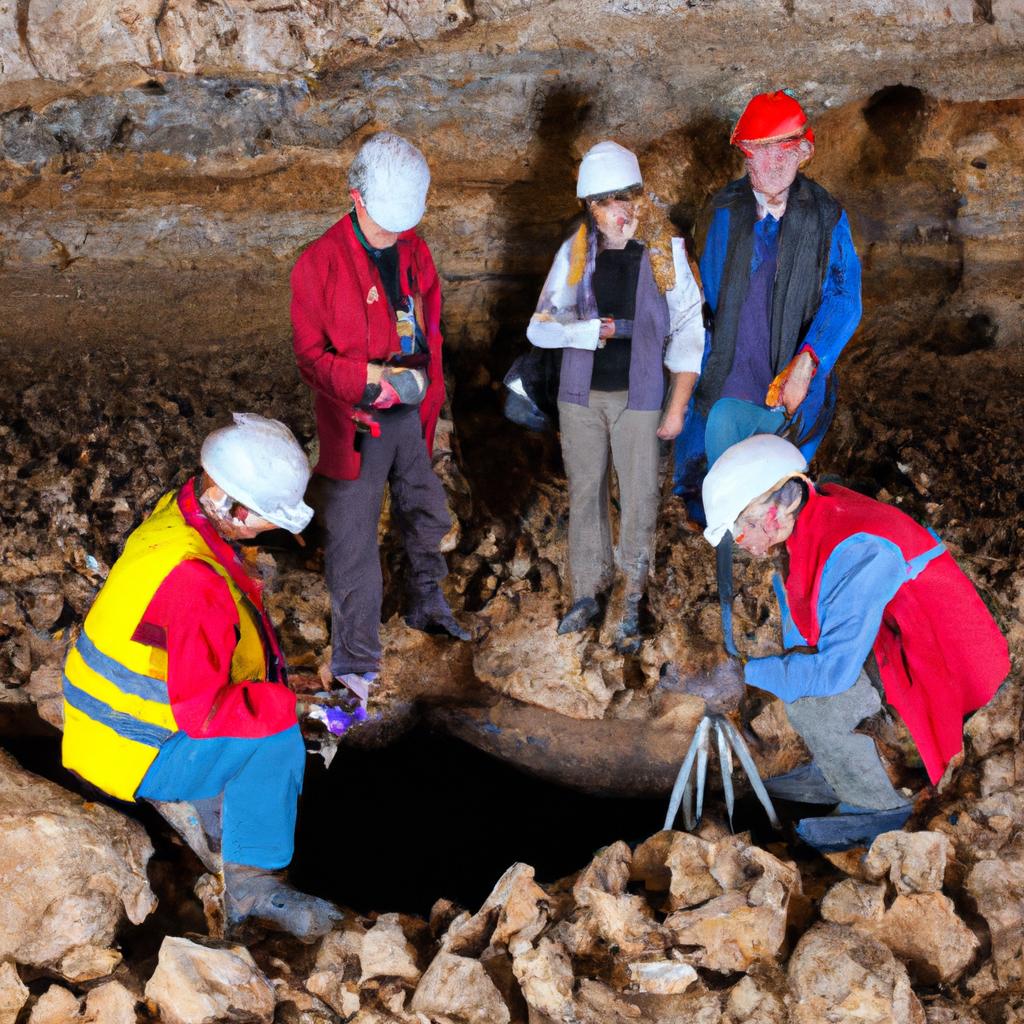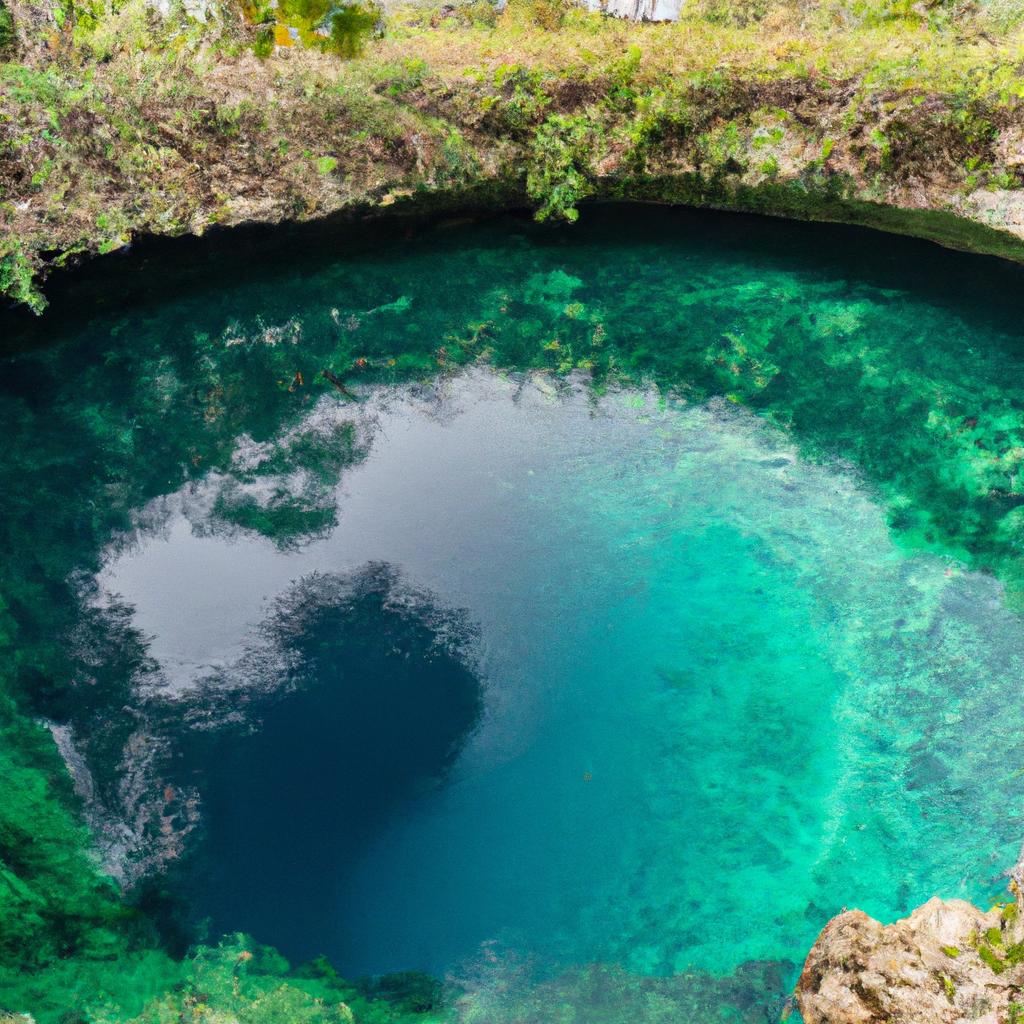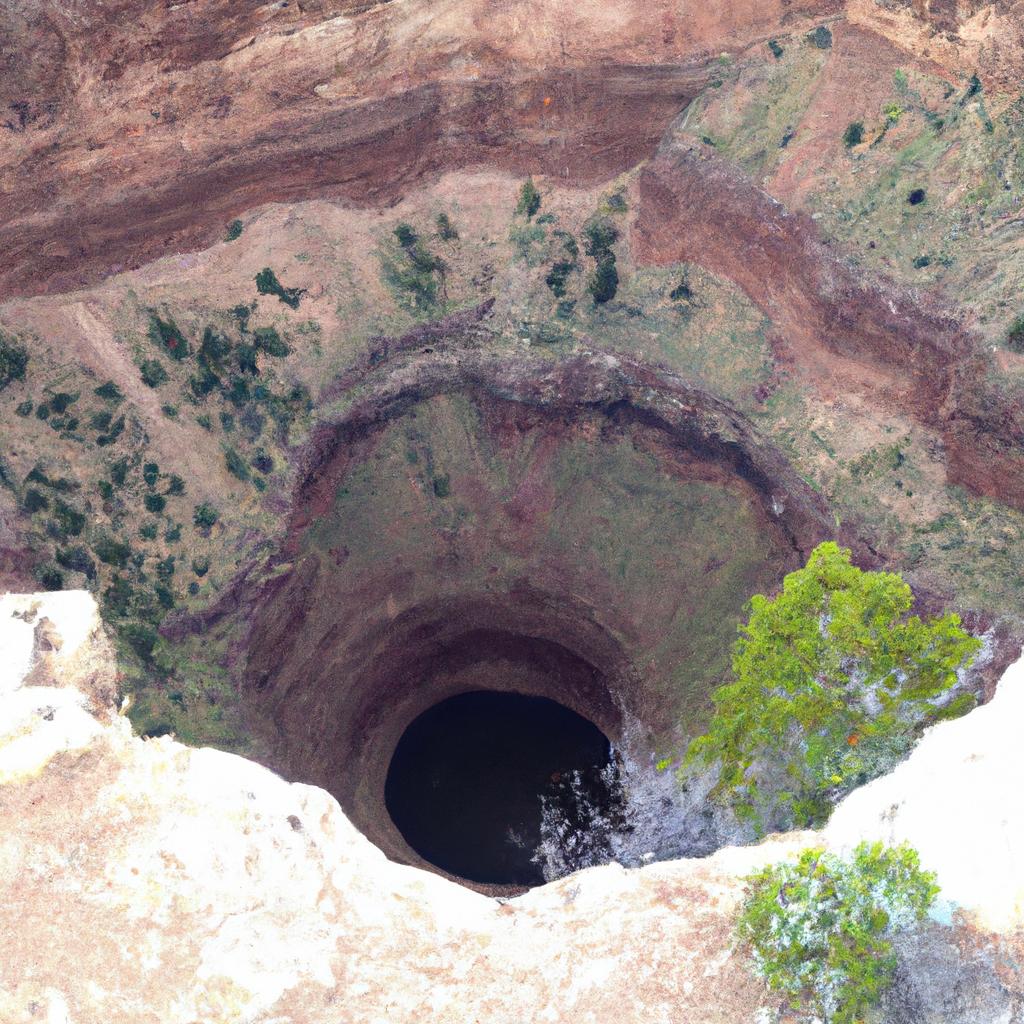Sinkholes are a fascinating and awe-inspiring sight found across the Earth’s landscape. These natural phenomena are formed by the gradual erosion of rocks and soil, resulting in depressions or holes in the ground. While sinkholes can range in size, there is one recent discovery that stands out above all others in terms of depth and scale. Join us as we delve into the world of sinkholes and explore the mesmerizing depths of the deepest sinkhole ever discovered.
What is a Sinkhole?
Imagine a world beneath the surface where the ground can swallow up buildings and structures whole. Sinkholes, also known as dolines, are depressions or holes in the ground caused by the collapse of the surface layer into an underground cavity. They can form naturally due to geological processes such as the dissolution of limestone or the collapse of underground caves. Human activities like mining, drilling, and construction can also contribute to their formation.

Overview of the Deepest Sinkhole Ever Discovered
Located in the Chongqing Municipality in China, the Xiaozhai Tiankeng is the epitome of sinkhole magnificence. This remarkable sinkhole measures over 600 meters deep and spans more than 500 meters in width. To put it into perspective, imagine a sinkhole deeper than the height of the Eiffel Tower and wider than the length of five football fields. It truly is a colossal wonder of nature.

Importance of Studying Sinkholes
Studying sinkholes serves not only to deepen our understanding of the Earth’s geology but also has practical applications. Sinkholes pose significant threats to infrastructure, property, and human life, making it crucial to comprehend their causes and anticipate potential effects. By unraveling the mysteries behind sinkhole formation, scientists can develop strategies to predict and mitigate the risks associated with these natural phenomena.

In the next section, we will explore the formation of sinkholes, examining the natural and human causes that contribute to their creation.
The Formation of Sinkholes
Sinkholes are the result of the gradual erosion of rocks and soil, causing the surface layer to collapse into underground cavities. This phenomenon can be attributed to both natural and human causes.
Natural Causes of Sinkhole Formation
Natural causes include geological processes such as the dissolution of rock formations, the collapse of underground caves or caverns, and the erosion of soil and sediment. Areas with substantial deposits of limestone are particularly prone to sinkhole formation due to its susceptibility to dissolution.
Human Activities that can Cause Sinkholes
Human activities can also contribute to sinkhole formation. Actions like mining, drilling, construction, and groundwater pumping can disrupt the natural balance of the Earth’s subsurface. Overusing groundwater, for example, can lead to sinkhole formation as the removal of water causes soil and sediment to compress.
The Role of Geology in Sinkhole Formation
Geology plays a significant role in determining an area’s susceptibility to sinkhole formation. Regions with soluble rock formations, like limestone or gypsum, are more prone to these natural phenomena. Additionally, the geological structure of an area, including faults, fractures, and joints, can contribute to the formation of underground cavities.
In the next section, we will explore the mesmerizing details of the deepest sinkhole ever discovered, unveiling its unique geological features.
The Deepest Sinkhole Ever Discovered
Located in the Chongqing Municipality, China, the Xiaozhai Tiankeng is a natural wonder renowned for its incredible depth and jaw-dropping dimensions. This mesmerizing sinkhole measures over 600 meters deep, stretching across 500 meters in width. Nestled within the Fengjie County and surrounded by steep cliffs and lush vegetation, it is truly a sight to behold.
Location and Dimensions
The Xiaozhai Tiankeng can be found in the Fengjie County of the Chongqing Municipality, China, within the Three Gorges Scenic Area. This picturesque sinkhole is known for its breathtaking natural beauty. In terms of dimensions, the Xiaozhai Tiankeng is a behemoth, measuring 662 meters deep, 626 meters long, and 537 meters wide. It ranks among the largest sinkholes in the world.
Exploration and Discovery
First discovered in 1994 by a team of Chinese scientists, the Xiaozhai Tiankeng wasn’t fully explored and documented until 2001. Since then, it has captivated the hearts of adventurers and scientists alike. This geological marvel has become a sought-after destination, enticing explorers with its unique features and stunning beauty.
Geological Features and Origin
The Xiaozhai Tiankeng is a prime example of a natural sinkhole formed through the erosion of limestone rock over millions of years. Water seeped into the ground, dissolving the limestone and creating expansive underground caverns. As these caverns grew larger, the surface layer of rock became increasingly unstable, leading to its eventual collapse and the formation of the sinkhole we see today.
This extraordinary sinkhole is not only a geological wonder but also a flourishing habitat for diverse flora and fauna. Its unique microclimate supports a variety of plant species, while its steep cliffs provide nesting grounds for birds and shelter for other wildlife.
Stay tuned for the next section, where we will explore the implications of the deepest sinkhole ever discovered, including its scientific significance, environmental impact, and economic implications.
Implications of the Deepest Sinkhole Ever
The discovery of the Xiaozhai Tiankeng holds significant implications across various fields of study, ranging from science and the environment to the economy. Let’s delve into each of these implications in more detail.
Scientific Significance
The Xiaozhai Tiankeng is an invaluable geological treasure that provides crucial insights into the Earth’s structure and history. Its formation and existence shed light on geological processes that have shaped our planet over millions of years. By studying the rocks, sediments, and surrounding environments, scientists can deepen our understanding of the Earth’s geology and the processes that mold it.
Environmental Impact
Sinkhole formation can have substantial environmental consequences, particularly in regions with delicate ecosystems. The Xiaozhai Tiankeng’s discovery has raised concerns about the potential effects on local flora and fauna. The sinkhole’s presence may disrupt natural water flows, alter soil composition, and impact microclimates in the surrounding area, leading to changes in plant and animal populations.
Economic Implications
Sinkholes can pose economic challenges, particularly in densely populated or heavily developed areas. The Xiaozhai Tiankeng’s location in a region known for its thriving tourism industry has placed it in the spotlight. However, it also poses potential risks to local infrastructure, such as roads, bridges, and buildings. Balancing the sinkhole’s discovery against its potential risks will require careful management and mitigation strategies.
In the next section, we will explore the ongoing research surrounding sinkhole formation and prevention, as well as the techniques used to mitigate their effects.
Sinkhole Research and Mitigation
Sinkhole research and mitigation efforts are crucial for protecting infrastructure, property, and human life. Scientists, engineers, and other experts are continually working to develop new techniques for predicting and mitigating the risks associated with these natural phenomena.
Current Research on Sinkhole Formation and Prevention
Research on sinkhole formation and prevention encompasses various disciplines, including geology, engineering, and hydrology. Current research focuses on understanding the geology of sinkhole-prone areas and developing methods for predicting sinkhole formation. These methods include geophysical surveys, remote sensing technologies, and computer modeling.
Another area of research involves preventing sinkhole formation through measures such as stabilizing rock and soil layers, controlling water infiltration, and improving drainage systems.
Techniques Used for Sinkhole Mitigation
When sinkholes do occur, mitigation efforts are necessary to minimize their impact. Several techniques are used for sinkhole mitigation, including grouting, soil stabilization, and sinkhole filling. Grouting entails injecting a cement-like material into the ground to fill voids and stabilize the soil. Soil stabilization involves strengthening soil layers to prevent further sinkhole formation. Sinkhole filling requires filling the sinkhole with materials like sand or concrete.
Importance of Public Awareness and Education
Public awareness and education play vital roles in preventing sinkhole-related accidents and mitigating their impact. Educational programs can raise public awareness about the risks associated with sinkholes and the measures that can be taken to reduce their impact. These measures include avoiding construction in sinkhole-prone areas, monitoring the ground for signs of sinkhole formation, and maintaining proper drainage systems.
In conclusion, sinkhole research and mitigation efforts are essential for protecting infrastructure, property, and human life. By understanding the causes of sinkholes, developing prevention and mitigation strategies, and raising public awareness, we can minimize the risks associated with sinkhole formation. Let us work together to appreciate the wonders of nature while ensuring our safety and the preservation of the environment.
For more information about sinkholes and their fascinating stories, visit TooLacks, your source for captivating content and the latest updates.


